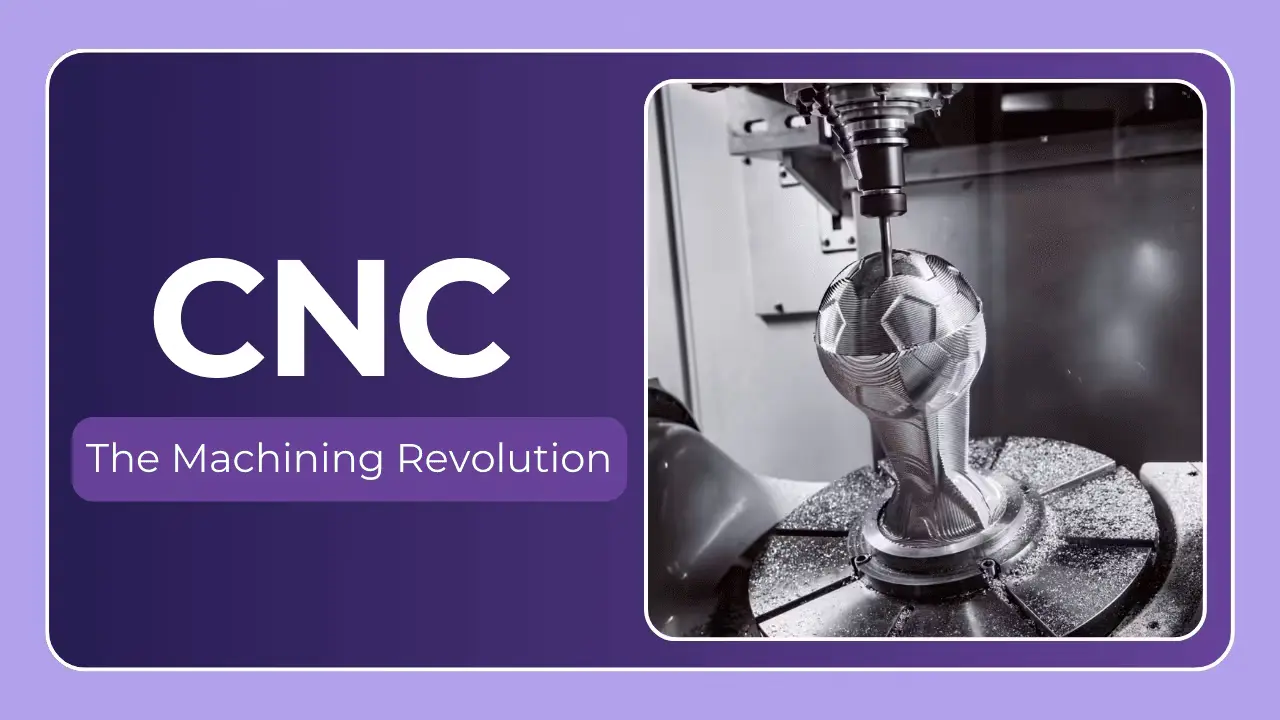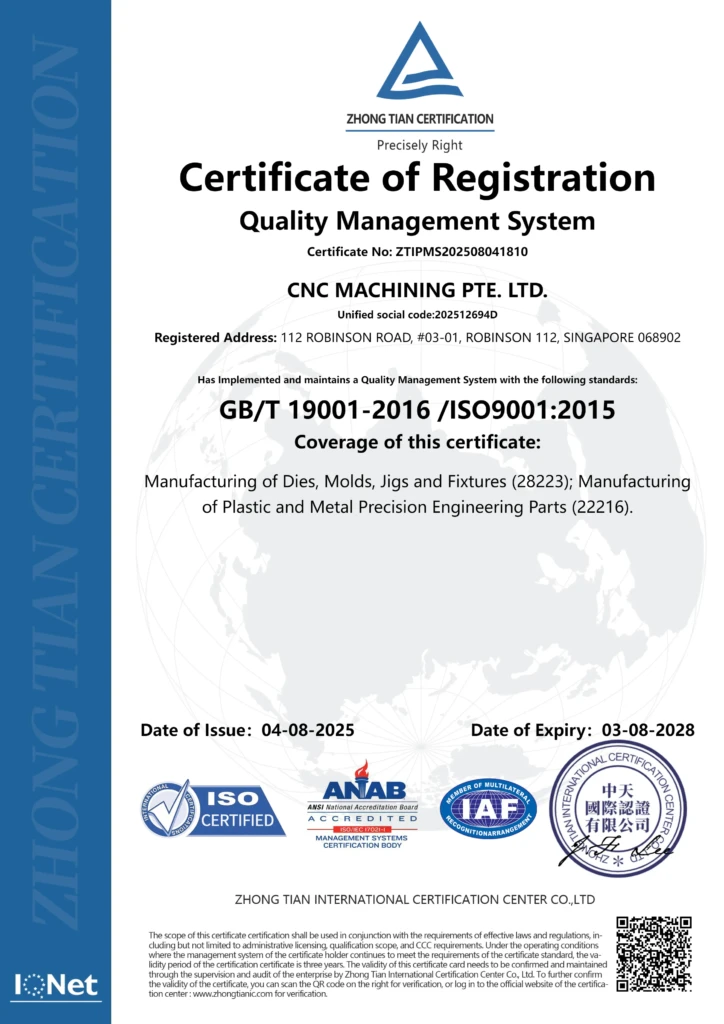Diving into the World of Wood CNC Machining: A Comprehensive Guide
Wood CNC machining has revolutionized the woodworking industry, moving beyond traditional methods to offer precision, repeatability, and design complexity previously unattainable. Whether you’re a seasoned woodworker looking to upgrade your capabilities, a designer eager to realize intricate creations, or simply curious about the technology, this guide will unpack the basics of wood CNC machining. We’ll cover everything from the core concepts to materials, common applications, the machining process, and considerations for choosing a CNC machining partner (like us, CNC MACHINING PTE. LTD, for those complex metal components often integrated with wood projects!).
What is CNC Machining, and Why Wood?
CNC stands for Computer Numerical Control. Essentially, it’s a subtractive manufacturing process where pre-programmed computer software dictates the movement of tools to cut away material from a solid block – in this case, wood – to create a desired shape. Instead of a skilled artisan wielding chisels and saws, a computer controls the cutting tools with incredible accuracy.
Why wood? While CNC machining excels with metals and plastics, wood offers unique advantages. It’s a readily available, relatively inexpensive, and environmentally friendly material. Furthermore, CNC machining unlocks the potential for incredibly detailed aesthetic designs, three-dimensional carvings, and perfectly consistent reproductions, things that are exceptionally challenging and time-consuming with manual techniques.
Understanding the Core Components of a Wood CNC Machine
Let’s break down the typical components you’ll find in a wood CNC machine:
- CNC Router: The heart of the system. This is the motorized spindle that spins the cutting tool (bits). Spindle speeds vary depending on the wood and desired cut.
- Frame/Gantry: Provides the structural support and allows the router to move across the workpiece. Often constructed from heavy-duty steel for rigidity and accuracy.
- Axis System: CNC machines operate across three primary axes:
- X-axis: Movement left to right.
- Y-axis: Movement front to back.
- Z-axis: Vertical movement (up and down).
- More advanced machines (like the five-axis machines we specialize in at CNC MACHINING PTE. LTD) add rotational axes (A, B, C) for even more complex geometries.
- Control System: The “brain” of the operation. This is the computer running the software that interprets the programmed instructions (G-code) and translates them into movements for the router. Popular control systems include Mach3, LinuxCNC, and proprietary systems from machine manufacturers.
- Workholding: Methods to securely hold the wood in place during machining. This can include clamps, vacuum tables, or double-sided tape.
- Dust Collection: Crucial for maintaining a clean workspace and preventing damage to the machine’s components.
Wood Types Suitable for CNC Machining
Not all wood is created equal when it comes to CNC machining. Here’s a breakdown of common choices and their characteristics:
| Wood Type | Hardness (Janka Rating) | Machinability | Common Uses | Notes |
|---|---|---|---|---|
| Softwoods | ||||
| Pine | 380-870 | Easy | Signage, Furniture parts, Decorative elements | Prone to splintering; requires sharp bits and careful feed rates. |
| Fir | 410-660 | Easy | Structural components, Model making | Similar to pine in machinability. |
| Cedar | 350-900 | Moderate | Outdoor furniture, Decorative carving | Aromatic; can be slightly resinous, affecting bit life. |
| Hardwoods | ||||
| Maple | 950-1450 | Moderate to Difficult | Furniture, Flooring, Cutting boards | Dense and requires sharp bits and slower feed rates. |
| Oak (Red/White) | 1290-1360 | Moderate to Difficult | Furniture, Flooring, Cabinetry | Open grain; can require multiple passes for clean cuts. |
| Walnut | 1010 | Moderate | High-end furniture, Decorative items | Beautiful grain pattern; machines well but can be expensive. |
| Cherry | 950 | Moderate | Furniture, Veneers | Develops a rich patina with age; machines reasonably well. |
| MDF (Medium-Density Fiberboard) | N/A | Very Easy | Paint-grade cabinetry, Signage | Consistent density; produces very clean cuts but creates a lot of dust. |
| Plywood | N/A | Moderate | Furniture, Structural components | Layered construction; requires careful consideration of grain direction. |
The CNC Machining Process: From Design to Finished Product
- Design (CAD): The process starts with a digital design created using Computer-Aided Design (CAD) software. Programs like AutoCAD, Fusion 360, and SolidWorks are popular choices.
- CAM (Computer-Aided Manufacturing): The CAD file is then imported into CAM software. This software translates the design into “G-code,” a language the CNC machine understands. The CAM software defines toolpaths, speeds, feeds, and other machining parameters.
- Setup: The wood workpiece is securely mounted onto the CNC machine’s table. The correct cutting bit is selected and installed in the spindle.
- Machining: The CNC machine executes the G-code, moving the spindle along the programmed toolpaths to remove material.
- Finishing: Once machining is complete, the part may require sanding, staining, painting, or other finishing processes to achieve the desired aesthetic.
Common Applications of Wood CNC Machining
The versatility of wood CNC machining has led to its adoption in a wide range of industries:
- Furniture Manufacturing: Creating intricate designs, custom components, and mass-producing furniture parts.
- Cabinetry: Precision cutting of cabinet doors, frames, and shelving.
- Sign Making: Producing high-quality, detailed wooden signs and lettering.
- Musical Instruments: Crafting guitar bodies, necks, and other instrument components.
- Model Making & Prototyping: Creating accurate prototypes and detailed models.
- Architectural Millwork: Producing custom moldings, trim, and decorative elements.
- Art & Sculpture: Allowing artists to translate complex designs into stunning three-dimensional sculptures.
Beyond Wood: Integrating with Other Materials – Where CNC MACHINING PTE. LTD Excels
Often, woodworking projects aren’t purely wood. Integrating metal hardware, accents, or structural components is common. This is where our expertise at CNC MACHINING PTE. LTD comes in. We specialize in high-precision metal machining – especially with five-axis capabilities – that can seamlessly complement your wood CNC creations. Imagine perfectly fitted metal joinery, intricate metal inlays, or robust metal supports all designed to integrate flawlessly with your wood components.
Choosing a CNC Machining Partner: What to Look For
If you don’t have the capacity or expertise to handle CNC machining in-house, choosing the right partner is crucial. Consider these factors:
- Experience: Look for a company with a proven track record in wood and (if necessary) integrated metal machining.
- Equipment: Ensure they have the appropriate CNC machines for your project’s complexity and size requirements. Five-axis machining is essential for highly intricate designs.
- Materials Expertise: They should be knowledgeable about different wood species and their machinability. (And, in our case, a huge range of metals!)
- CAD/CAM Capabilities: They should be able to work with your CAD files or assist with CAM programming.
- Quality Control: A robust quality control process to ensure accuracy and consistency.
- Turnaround Time: Discuss project timelines and ensure they can meet your deadlines.
- Cost: Obtain quotes from multiple providers and compare pricing structures.
Conclusion
Wood CNC machining is a powerful technology that’s transforming the woodworking landscape. It offers precision, repeatability, and the ability to create designs that were once unthinkable. Whether you’re a hobbyist, a small business owner, or a large-scale manufacturer, understanding the basics of this process can unlock a world of creative and production possibilities. And remember, for those projects demanding precision metal components to complement your wood masterpieces, CNC MACHINING PTE. LTD is here to help. We provide cutting-edge five-axis CNC machining services in Singapore, allowing you to create truly integrated, high-quality products. Contact us today to discuss your custom precision machining needs!




